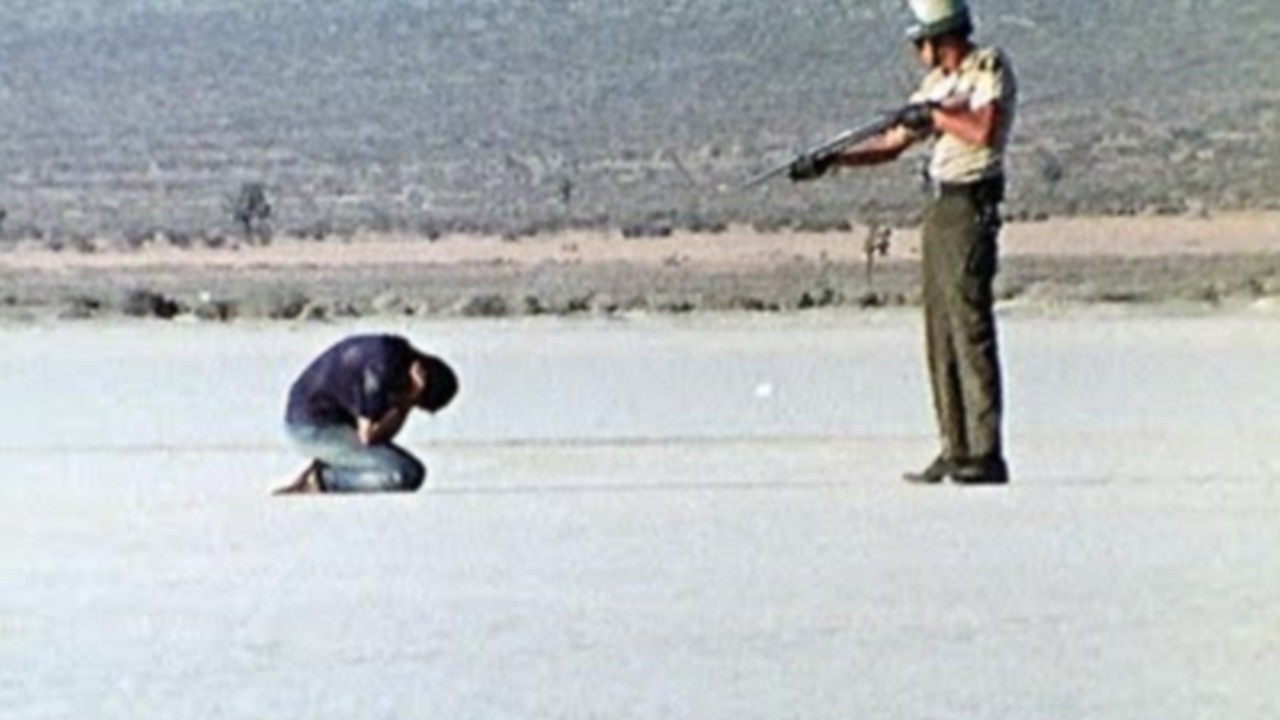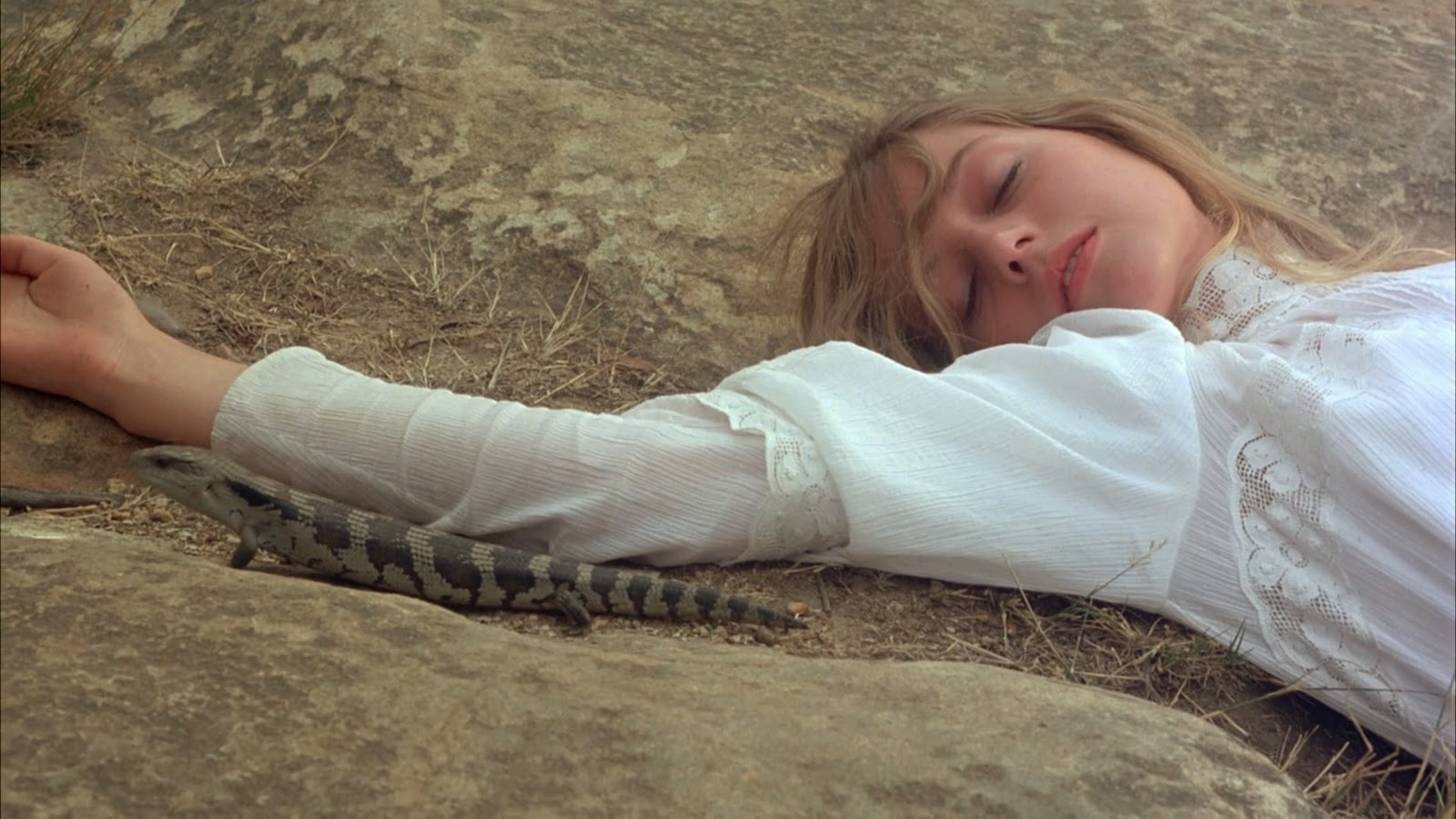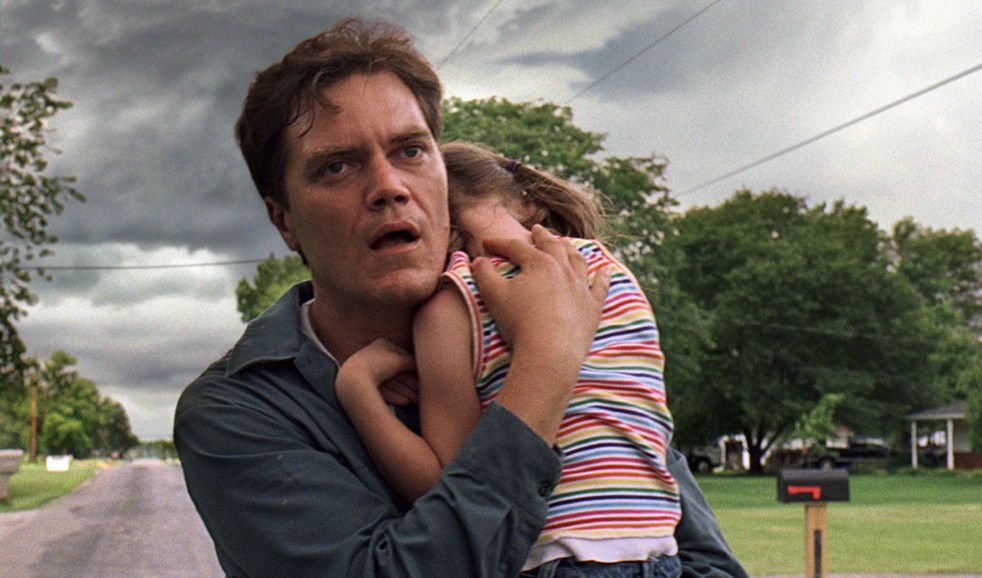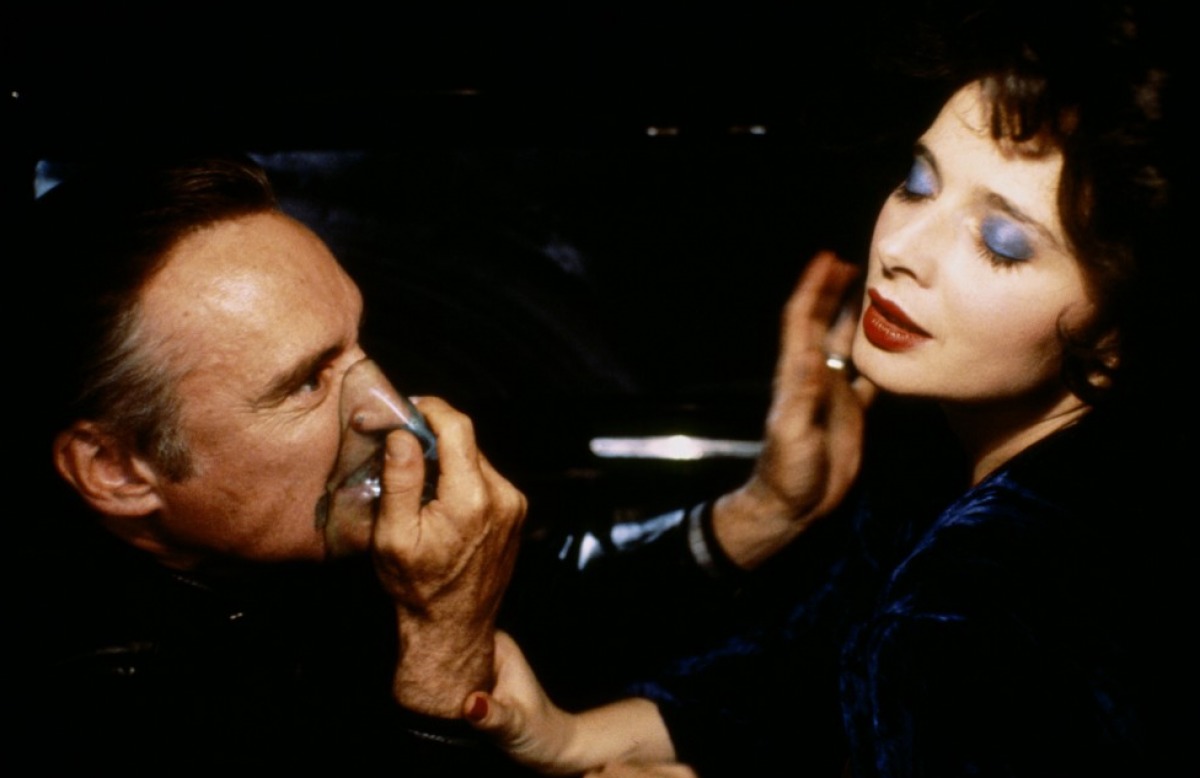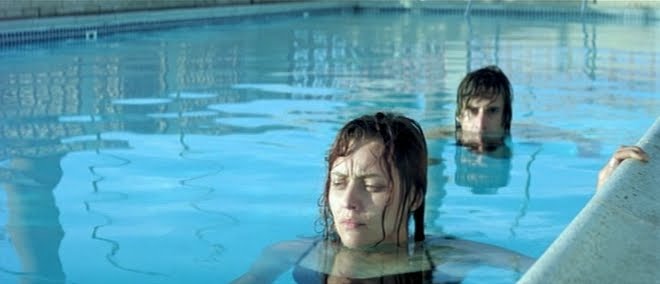7. Punishment Park (1971) – Peter Watkins
Moving away from the internalized horror that is substance abuse, the next section of “what if” scenarios read like scif-fi/horror stories where the impossible is made possible through cinema, with unsettling results. A hidden gem that was both effective and controversial can be found in Peter Watkins’s experimental mockumentary Punishment Park.
Taking place during the Nixon administration, a British filmmaker and his crew chronicle a bizarre form of capital punishment being employed by the U.S. Government, the National Guard, and California’s state troopers in the “Bear Mountain Punishment Park” in the Southern California desert.
The subjects, mostly left-wing upstarts, are arrested and detained under the McCarran Act (in which the President is given full powers without the clearance of Congress to detain potential insurrectionists surrounding a conflict against the State) and are given a hearing without bail or legal counsel to determine whether they are found guilty of spreading insurrectionist propaganda against the State.
Despite the mere sliver of justice being served against overwhelming odds, the subjects are always found guilty and are offered an ultimatum: either accept an absurd prison sentence or endure three days in the Punishment Park, an obstacle course where the subject must venture without food or water to a heavily-guarded American flag somewhere in the desert.
After a one-hour mercy period, the state troopers chase the unfortunate victims down in police vehicles and are allowed deadly force if provoked. The film divides its story in two, depicting a group already in the park juxtaposed with the trials of the next group that will follow.
A work of alternate history, this film works under group horror film’s parameters. Much like the Saw franchise, the idea of playing a game you cannot win is nightmarish in itself, and it is further made creepier by the fact that the leader of the country is the one giving the orders. At the beginning of the film, the director and narrator informs the audience that the Presidential Administration has ordered military strikes on Seoul, South Korea, thus fueling another potential world crisis in the wake of Vietnam.
The trial portion of the film is terrifying in which the detainees are almost never allowed to speak and are interrogated on the most insignificant items such as singing a revolutionary ballad or distributing pamphlets. Some of the characters react violently, some are actually bound and gagged. Meanwhile, the hopeless situation in the park itself is made threatening when the temperature rises to 100 degrees and the subjects must endure starvation, dehydration, and exhaustion.
Even in today’s fragile times, Watkins’s underrated film is effective and disturbing. Horror elements of victims working together to overcome a violent antagonist ensures that survival is improbable and each group is layered with different attitudes toward the situation. Some become homicidal while others remain peaceful and even hopeful.
Like Dumont’s Flandres, there is a lack of celebrity faces among the performers. The cinéma-vérité style and mostly ad-libbed acting is also used in a way most post-Blair Witch Project found footage horror films today.
Hard to find, but worth the time spent, Punishment Park feels like it is torn from the pages of Zinn’s A People’s History of the United States and is made scarier by the fact that the violence happening on U.S. soil during the film’s time period makes it seem this this all could very well have happened. It is creepier than found-footage and more effective than futuristic sci-fi.
8. Picnic at Hanging Rock (1975) – Peter Weir
Horror films that work on a subtle aesthetic are some of the most memorable, less is seen or heard and terror is instilled. Low-key horror films like The Innocents or The Devil’s Backbone master this craft of haunting very well yet Peter Weir’s Australian New Wave masterpiece Picnic at Hanging Rock usually gets omitted from horror circles. A possible reason could be the various ways it can be watched, but it can definitely be viewed as a horror film.
The most effective device this movie has is its simplicity and ambiguity. Set in 1900 in Victoria, Australia, a group of young schoolgirls make a trip to Hanging Rock, a mysterious volcanic mass that lays out in the vast expanses of Australia’s wilderness. The teacher warns the girls that the rock is not the safest place to be, but allows four of the schoolgirls to explore the rock on their own.
What happens next borders on the paranormal as watches collectively stop, the picnickers all fall asleep, and three of the girls and the teacher mysteriously vanish. One of the four that explored the rock has no recollection of what happened and a large investigation by the police takes place.
What seems like a historic retelling of a mind-boggling mystery that really happened is actually based on a 1967 novel by Joan Lindsay, Picnic at Hanging Rock tells a horror story through its simple and steady approach, while asking questions that might not be answered no matter how much the audience wants the truth. This approach gives the film an unsettling vibe and its execution raises the question, “did this really happen?”
Stylistically, the film’s imagery is that of a Victorian-era period piece, but at the same time the virginal white dresses of the girls root the film in a twisted eroticism that adds to the creepiness. The spectre of sexual awakening haunts every scene of the film, from corset fastening to the ominous phallic imagery of Hanging Rock itself.
The pacing of the film is like that of a collective community police procedural once the girls disappear, and though almost everyone involved is somehow haunted by what happened, the story does not go to great lengths to conjure up spirits or special effects-worthy jump scenes. Instead, characters wander around like somnambulists and remain in a perpetual state of confusion and melancholy.
The music cues are also highly reminiscent of 60s and 70s horror films that give the film a menacing air when accompanied with shots of the sinister looking Hanging Rock. It is through these subtle and ambiguous approaches to film form where Picnic at Hanging Rock almost seems like the events that take place really happened and haunt Australia’s history as a whole.
Although this film can be read in many different ways (period piece, colonial satire, mystery story), it works very well as a horror film sheerly due to its underlying creepiness through masterful storytelling.
9. Take Shelter (2011) – Jeff Nichols
While Punishment Park deals with alternate history mirroring current events and Picnic at Hanging Rock could be a creepy moment in history, Jeff Nichols’s Take Shelter can be viewed as an “alternate future” film. This film could be happening in the same universe as Stephen King’s The Stand, Cormac McCarthy’s The Road, and Michael Haneke’s Time of the Wolf. Once again, it is the film’s subtleties that make it scary as it is low on violence and only hints at the truth with a strong possibility of doubt.
The story takes place in rural America where Curtis (Michael Shannon), a construction worker begins having apocalyptic nightmares. The frequency of these visions put Curtis into a state of paranoia that the world is coming to an end.
Fueled by the will to survive, Curtis begins building a fallout shelter in his backyard. Ignoring the pleas of his family and community, Curtis carries on his one-man crusade against the end of the world while consistently suffering from horrific visions of attacks and killings performed by people he knows against him and his family.
Like M. Night Shyamalan’s earlier films, the plot to Take Shelter begins asking questions immediately with no real answers in sight. Things are made more complicated when it is made known that Curtis has an extensive family history of paranoid schizophrenia. Nichols juggles the scientific with the paranormal in such a way that it keeps the audience guessing even after the credits have rolled.
This film is a horror film in the sense that it is an expert “pre-apocalyptic” film. Rather than crank out another post-apocalyptic journey through a decaying landscape, Nichols’s film instead shows the beginnings of this decay much like the beginning of Stephen King’s novel The Stand did.
There is an odd Biblical plague feel to the film’s atmosphere and the cinematography favors various wide angles of landscapes that mirror scenes of nightmarish destruction in Curtis’s dreams. The randomness and brutality of some of Curtis’s visions immediately strike terror with their furious pace and abrupt endings. The film was so effective that it was nominated for a Saturn Award for Best Horror Film despite being mainly a drama-thriller.
Sometimes the devil is simply in the details.
10. Blue Velvet (1986) – David Lynch
In the final section of this list are the films that remain thrillers but are deemed horrors in their own right by various audiences. They focus on shock and handle the ever-present jump scares of horror cinema in unique and bizarre ways. To begin with a more accessible title for this section, there is David Lynch’s mystery-thriller Blue Velvet.
Disguising itself as a suburban mystery tale, Blue Velvet is all about the decay of what looks beautiful. Vivid blue skies compliment green lawns, sparkling clean fire trucks drive by with smiling firefighters waving to friendly neighbours, all while Bobby Vinton’s feel-good song “Blue Velvet” plays over everything.
A man watering his lawn suddenly suffers a stroke and the camera then digs deeper, past the pristine green lawn with the white picket fence to reveal ants and beetles rooting through the mud, consuming everything in their path.
With this unsettling shattering of the ordinary, David Lynch takes his viewers on a nightmarish ride through the underside of life. Called back to his hometown after his father’s stroke, Jeffrey Beaumont (Kyle MacLachlan) is out walking in a field when he finds a severed human ear (also crawling with ants).
Police investigations are made and Jeffrey learns that the case may be linked to a mysterious woman named Dorothy Vallens (Isabella Rossellini). Becoming obsessed with the mystery of it all, Jeffrey begins spying on Dorothy and he is thrown into a whirlwind of bizarre events.
David Lynch is no stranger to bizarre horror films, his cult hit debut film Eraserhead was billed a horror film from the start while even traces of horror were seen in his heartbreaking second film The Elephant Man. Blue Velvet was a return to form for Lynch after the flop that was 1984’s Dune and Lynch came back with a bang.
The film, already dubbed horror by many fans is mainly a murder mystery with horror undertones, but the fact that it terrifies audiences in a Hitchcockian sense gives this film its horror chops. The film gradually descends into horror territory with the introduction of Frank Booth (Dennis Hopper), a gas huffing borderline psycho who appears to be holding Dorothy’s son and husband hostage.
In the film’s most memorable scene, Jeffrey helplessly watches from a closet as Frank pops in for a visit. In the brief scene, Frank viciously beats Dorothy, huffs his mystery gas, threatens her with scissors, and has freaky awkward sex with her. The scene is unsettling enough, but Dorothy’s reaction to her physical battering is one of complacency and care for Frank (who is calling himself “Baby” the entire time).
The above-mentioned scene alone is lifted straight out of horror cinema history yet practically every scene with Frank unravels into a psychotic explosion of violence and keeps the audience on edge every time he puts that inhaler on. Lynch would explore this idea of psychological horror in most of his later films, most notably in 1996’s Lost Highway where things get paranormal. Much like Alfred Hitchcock before him, David Lynch successfully bridges the gap between horror and suspense.
11. Irréversible (2002) – Gaspar Noé
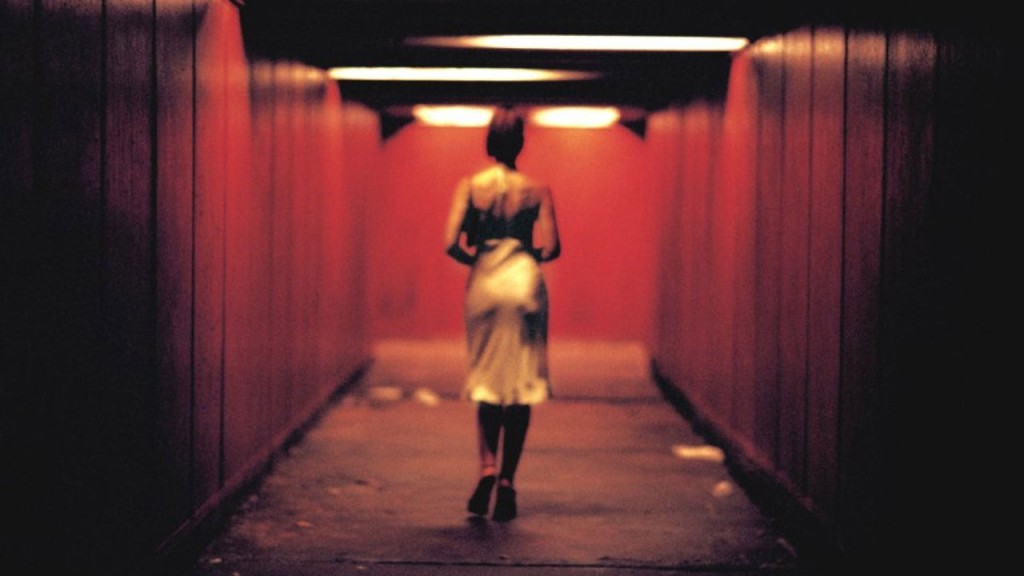
As disturbing as most of these films are, none of them top the subject matter of this entry. A breathtaking tale of ferocity that is bookended in horrible violence, the film is so disturbing it hardly gains more than one viewing once it has been watched completely. Not mere steps away from horror cinema, Irreversible actually steps beyond horror and instead is a basic assault on the senses.
Designed to make the viewer physically uncomfortable, Noé employs visual and aural tactics to cause nausea and extreme discomfort just by being in the same room as this film. With a constantly moving camera and a weird audio buzz, the visuals and the noises crawl into the viewer’s head and create an effect unlike anything done in horror cinema.
Told chronologically backwards, the film opens with a bleak monologue by an older man indicating that the story will be a depressing one. What follows is a murder in the dark cellars of a homosexual Parisian nightclub that is both brutal and horrifying. The two parties involved, Marcus and Pierre (Vincent Cassel and Albert Dupontel) are being wheeled away to the hospital and police station for the murder, what unfolds is the events that got them there.
This film actually goes beyond horror in many ways, which is probably why most classifications for this film simply read “thriller” or “drama.” The pacing is so frenetic and the acting is so fierce, the film has the stylings of a modern day horror like Saw or Hostel. Using the tactic of long takes and handheld cameras, Irreversible is in constant motion and compliments the charismatic performances of the actors to a masterful extent.
Where a taxi ride through a slummy area of Paris suddenly erupts into a racism-fueled tirade spurred on by anger and fear. Surely the violence in the film has inspired its horror film successors of post-2000 cinema. Despite the sheer brutality of the film’s opening murder scene, the part this film is most known for is its most shocking.
Following Marcus’s wife Alex (Monica Bellucci) through a dark tunnel, we witness her getting accosted by an ill-tempered man who threatens her with a knife. In the only scene of the film where the camera stays in one place, the viewer must endure a nearly 11-minute-long rape scene where Alex’s cries are heard, passersby decide not to help, and eventually Alex winds up beaten into a coma.
As stated earlier, these scenes, although rooted in 1970s and 1980s “video nasty” style, prove unbearable to watch and contain no entertainment value or appreciation whatsoever, thus transcending horror while remaining a staple to what horror films strive to achieve via their gimmicky effects yet do not dare cross so far down the line.
12. Twentynine Palms (2003) – Bruno Dumont
Bruno Dumont makes a second appearance on this list as he has a knack for producing disturbing films that fall from the mainstream eye. This one is a slow-boiler, an English- and French-language film with only two main characters (David Wissak and Katia Golubeva) who keep their real names throughout.
Twentynine Palms follows the couple on a photography trip through Joshua Tree National Park in California. The couple spend most of their time driving, arguing, making up, and having sex to an uncomfortable level until they fall victims of a random bizarre crime.
Upon first inspection, one would wonder why this film would be included on a list of non-horror films that are mere steps from being horror films, but awkward sex aside, the film has a lingering feeling that something terrible is going to happen. Whether it be the symbolic redness of the couple’s Hummer H2 or the beautiful yet haunting landscapes devoid of other people give the film an emptiness and uncertainty about what is possible.
Being that anything can happen in a Dumont film, the continuous bickering between the couple (who also suffer from a language barrier at points in their conversations) adds to the paranoid effects of a possible horror to come. Knowing Dumont’s tendency to show random brutal violence stays at the back of the viewer’s head.
Once again, Dumont refuses to give his film a soundtrack so all noises or music within the film are diegetic (i.e. radios and televisions) making his film both startling and beautiful to watch, much like Antonioni’s Zabriskie Point.
The less said about this film’s conclusion the better so for spoiler’s sake stop reading here if an undisturbed viewing of the film is in order.
In the final act of the film, the couple are unexpectedly stalked through a desert road by a white pickup truck and are run off the path. Instead of driving off, the stalkers exit their vehicle and attack the couple, anally raping David. Much like the horrible rape scenes from Deliverance and The Last House on the Left, the randomness of this action leaves David and Katia bewildered and in a state of catatonic shock.
The emotional duress of the event takes its toll in the film’s penultimate scene where David suddenly emerges from a motel bathroom completely naked and shorn of hair. Screaming in an otherworldly voice, David straddles poor Katia and stabs her multiple times to death with a small knife. More effective than a jump scare, or slasher movie killing, this scene is all about a non-existent buildup, completely silent then interrupted with an explosion of noise and violence.
Dumont’s lingering camera focusing on the event looks more like something out of a Tarkovsky film than a low-budget slasher blockbuster. The horror is given an extra layer in the film’s final scene, a two-minute extreme wide shot of the red Hummer in the desert next to David’s naked dead body while a California state trooper radios the crime scene in.
Indeed mere steps away from being a horror film, Twentynine Palms uses jump scare tactics with economic precision and keeps the audience uncertain throughout the film at what will happen to the two characters over the course of the plot.
Author Bio: Josh Schasny is a film studies graduate and screenwriter based out of Montreal, Quebec. A born film buff he loves to get together with people to talk film. He also writes lists, articles, scripts, helps people shoot films, and one day will eventually die.
